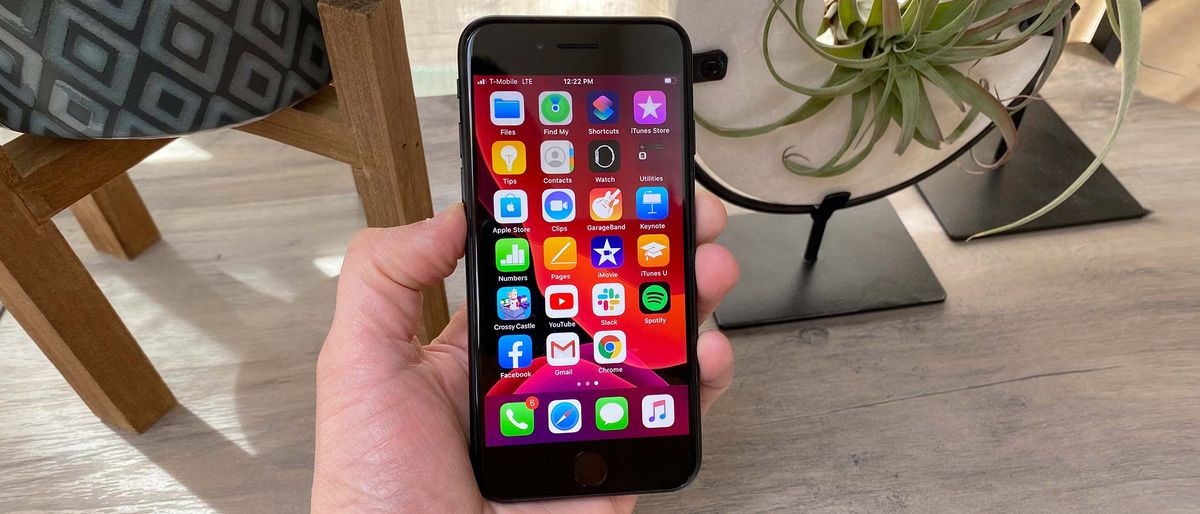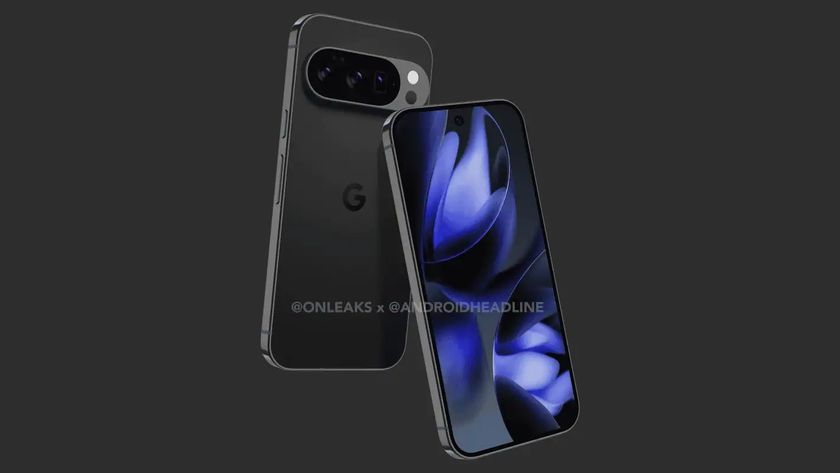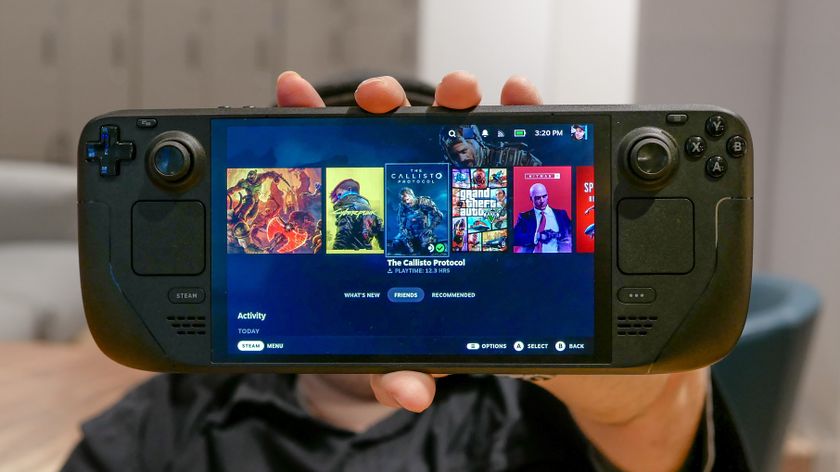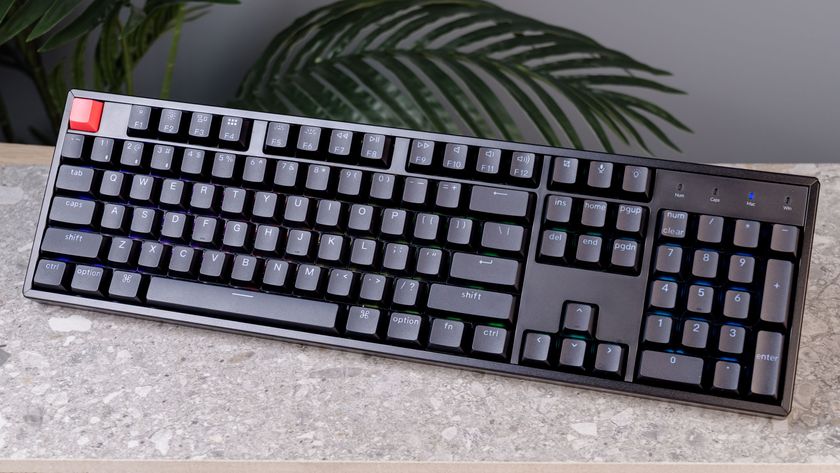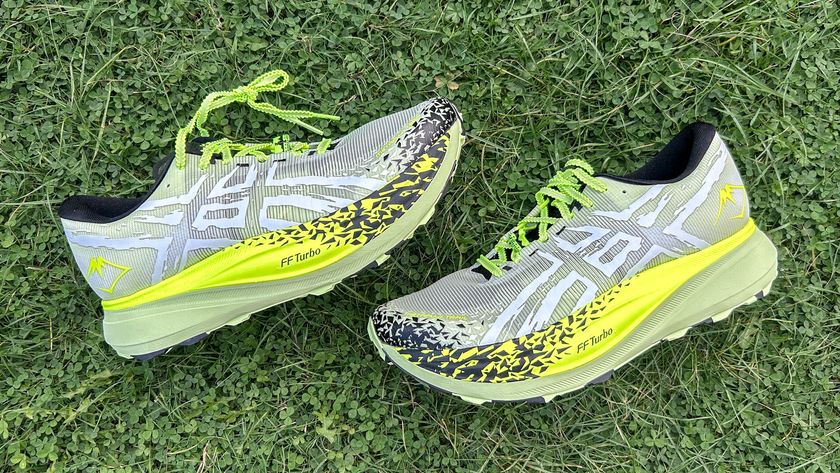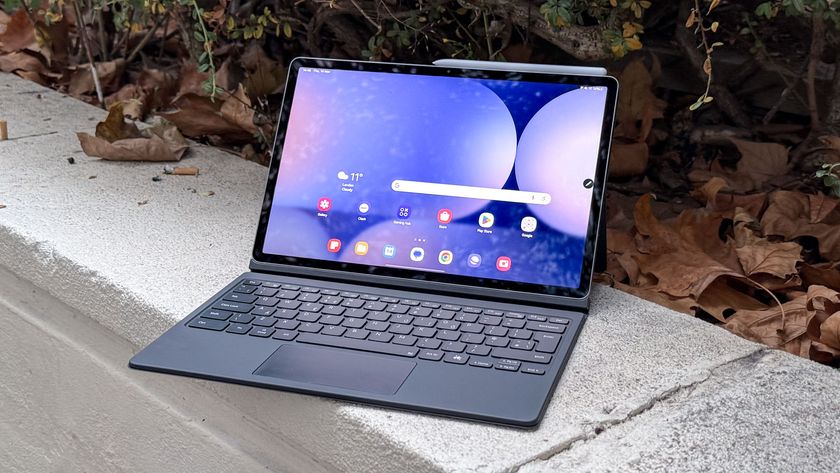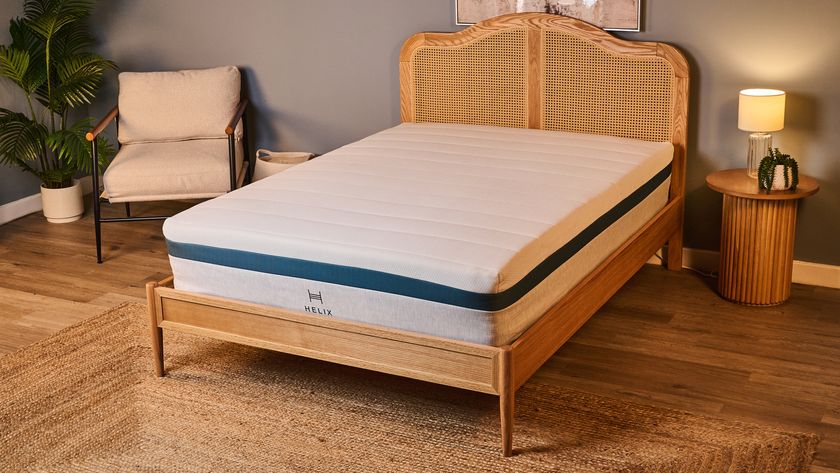Tom's Guide Verdict
The iPhone SE is an outstanding phone for less than $400, delivering fast performance and very good cameras in a compact design. The only thing missing is Night Mode.
Pros
- +
Affordable price
- +
Fast A13 Bionic performance
- +
Very good cameras
- +
Compact design
- +
Supports wireless charging
Cons
- -
Big bezels
- -
Lacks 5G
- -
No Night mode
- -
Shorter battery life than other iPhones
Why you can trust Tom's Guide
Price: $399/£419
CPU: A13 Bionic
Storage: 64GB, 128GB, 256GB
Display: 4.7 inches (1334 x 750)
Rear camera: 12MP (f/1.8)
Front camera: 7MP (f/2.2)
Video recording: 4K video up to 60 fps
Water resistance: IP67
Battery life: Up to 13 hours video playback
Wireless charging: Yes (Qi)
Fast charging: Yes via optional 18W adapter
Size: 5.45 x 2.65 x 0.29 inches
Weight: 5.22 ounces
The iPhone SE (2020) remains a great phone for the money even though it's just been replaced. The iPhone SE (2022) doesn't change much if all you're looking for is the iPhone experience for as cheap as possible.
The 2020 model's older chip is less powerful and less efficient, plus doesn't offer features like 5G compatibility or Photographic Styles. You also don't get the new tougher front and back glass on this version. However, it's still got what you need if you're not bothered about the latest features.
You may find it difficult to find this model in stock these days, and given it'll likely have a shorter life of software support ahead of it than the new SE, you may be better off avoiding it. But the iPhone SE 2020 remains a good phone even with its successor now here.
- The best iPhone SE deals now
- iPhone SE vs iPhone XR: Which affordable iPhone wins?
- Best unlocked iPhones
I just wish Apple trimmed the bezels on this phone and added a night mode for the camera. If you're wiling to spend more, the $699 iPhone 13 mini is a good alternative with a larger 5.4-inch display and 5G.
Regardless, you can't deny that the iPhone SE 2020 remains one of the best phones you can buy for the money.
iPhone SE 2020 price and release date
The iPhone SE costs $399/£419, the same price it debuted at in April 2020. The $399 model features 64GB of storage for $399, but you can upgrade to the 128GB version for $449/£469 and to 256GB for $549/£569.
Trade in your old device when you buy the iPhone SE, and you could get as much as $120 off your new phone, lowering the price to $279. You can also check out the best iPhone SE deals to see if there are additional savings available.
The iPhone SE is available through all of the major carriers, including AT&T, Sprint, T-Mobile and Verizon, as well as other carriers including Xfinity Mobile and Visible.
iPhone SE 2020 review: Design and colors
I generally like the iPhone SE’s design — with one exception. On the plus side, it’s a very well made handset with the same sturdy glass-and-aluminum design of the iPhone 8. There are three color options for the iPhone SE: black, white and (Product)Red. I like how the aluminum band is color matched with the back of the device.
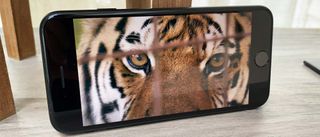
I tried out the black model, which looks and feels sleek but did pick up smudges despite the oleophobic coating. You’ll probably want to opt for white if you want to hide fingerprints.
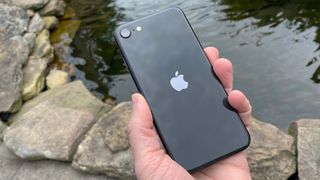
Another plus to the iPhone SE: The whole design is almost comically compact compared to the iPhone 11 Pro Max or the new iPhone 12 Pro Max. It’s the difference between barely noticing a phone is in your front pocket and having it bulge out. I also didn’t feel any discomfort when gaming for over 30 minutes at a time; I can’t say that about my iPhone 11 Pro Max.
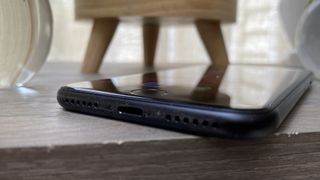
The iPhone SE measures 5.45 x 2.65 x 0.29 inches and weighs 5.22 ounces, which is smaller and narrower than the Google Pixel 4a but about the same weight. The Pixel 3a has a much bigger 5.81-inch edge-to-edge display with a hole punch cutout. However, unlike Google's budget phone, the iPhone SE 2020 has IP67 water resistance. That means it can be submerged in 1 meter of weather for up to 30 minutes. You also shouldn’t have to worry about coffee or soda spills with this phone.
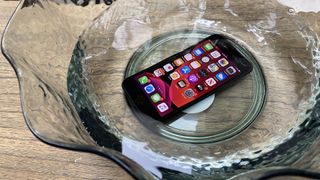
Unfortunately, the bezels around the iPhone SE’s screen look big and dated for a 2020 smartphone. I kept trying to zoom in on videos to no avail. I would have liked Apple to fit a larger display in the same size chassis.
Another issue is that Haptic touch does not work on the lock screen of the iPhone SE for some reason. Unlike other iPhones, you can't long press on notifications to expand them on the lock screen.
iPhone SE 2020 review: Touch ID
Although Apple has offered Face ID on all of its newer phones for the past couple of years, the new iPhone SE 2020 uses a Touch ID sensor underneath the display for unlocking the device. This same sensor can be used for authorizing App Store downloads, Apple Pay and entering passwords.
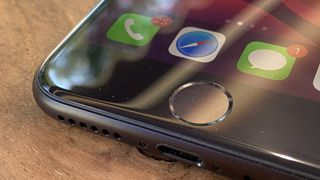
Just like I remembered, the combo Touch ID/home button worked well, and you can choose the amount of haptic feedback you prefer when you press down. The Touch ID button has a very important — and unexpected — benefit right now as many are being ordered to wear face masks in public. You can still easily unlock your iPhone SE without having to take off your mask. Face ID won’t work with masks.
iPhone SE 2020 review: Display
A 4.7-inch screen on a modern-day phone may seem antiquated, but those shopping for one of the best small phones won’t be disappointed in this panel.
I enjoyed checking out the Wonder Woman 1984 trailer on YouTube on the iPhone SE 2020’s Retina Display. The superhero’s gleaming red, blue and gold suit popped as she deflected bullets with her silver bracelet. The iPhone SE’s screen also did a good job rendering finer details in a Tiger King scene: I could make out individual whiskers on the majestic animal’s face.
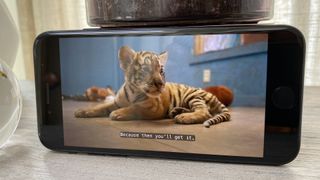
Just don’t expect a full HD picture. The iPhone SE’s display resolution is just 1334 x 750 pixels. We would prefer to see a 1080p display but it’s not too bad of a trade-off.
The iPhone SE’s screen is bright, as it’s rated for 625 nits and scored an even higher 653 nits in our testing. It’s just a bit dimmer than the Pixel 4a’s 681 nits.
I didn’t have any issues viewing the screen outdoors when surfing the web or taking photos. The panel also supports True Tone, which means it can automatically adjust the screen’s color temperature based on the ambient lighting conditions.
Based on our tests, the iPhone SE’s display reproduces 111.2% of the sRGB color gamut, which just barely beats the 105.8% from the Pixel 4a’s OLED panel. The iPhone SE delivers accurate colors, too, achieving a Delta-E score of 0.2; a score of zero is perfect. The Pixel 4a’s screen scored 0.29.
iPhone SE 2020 review: Cameras
The iPhone SE 2020’s camera is so good that you’d be hard pressed to tell the difference between it and the iPhone 11 in many cases. The one exception is Night mode, which the iPhone SE simply does not have.
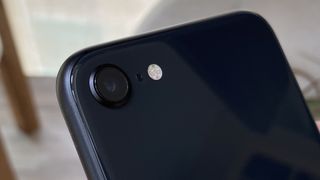
Like the iPhone 8 before it, the iPhone SE features a single 12-megapixel rear camera and a 7MP front camera. You don’t get a ultra-wide angle lens like the iPhone 11 or a telephoto lens with optical zoom like the iPhone 12 Pro models. But the iPhone SE's A13 Bionic chip boosts its camera performance in several ways.
For instance, you can take portraits using both the back and front camera on the iPhone SE, complete with Portrait Lighting effects and the ability to control the depth of field. The iPhone SE also benefits from Smart HDR for bringing out the highlights in faces.

I was pleasantly surprised by the level of detail in this iPhone SE photo of a man-made pond. You can make out the drops of water in the waterfall in the distance, and the greenery pops around the rock formations. The iPhone SE also did a great job capturing the black-and-white and orange-and-white fish in that pond, as well as the blue-green water.
The iPhone SE held its own against the Pixel 3a in this photo of light pink cherry blossom flowers. The iPhone SE’s shot is warmer and brighter, but the Pixel 3a’s image is a bit more detailed and has more contrast.
I also give the nod to the iPhone SE here with this portrait. My skin tone looks more natural and the bokeh effect looks very convincing. The Pixel’s manages to take a chunk out of the right side of my head. There is one small drawback to the iPhone SE when taking portraits, though; you have to get considerably closer to your subject than you do with the iPhone 11 Pro because the iPhone SE doesn’t have a telephoto lens. (You will be within 6 feet, which is not social-distancing friendly.)
The iPhone SE pulled ahead in this photo of an Aperol Sprtiz cocktail. The overall image just looks brighter and more appetizing. I also like how the iPhone SE blurs out the background. The only strike against the iPhone here is that the tile looks more yellow than white; the Pixel 3a got that right.
The one camera weakness for the iPhone SE is the lack of a Night Mode. In this photo taken outside at night, the Pixel 3a is able to render the trees in the foreground, the car in the street and the house in the background. You can barely make out anything in the iPhone SE’s shot. I don’t know if the iPhone SE could pull off a Night mode with a software upgrade, but it would be great to see Apple add the feature.
If you're wondering how the iPhone SE's cameras measure up to a more recent device than the Pixel 3a, check out our Google Pixel 4a vs. iPhone SE face-off for a camera comparison to Google's current budget offering.
On the video front, the iPhone SE can record 4K video at up to 60 fps, and you can enjoy extended dynamic range if you drop down the frame rate to 30 fps. This brings out more details in the shadows along with better highlights.
iPhone SE 2020 review: Performance
While Android phone makers outfit their budget phones with weaker processors, the iPhone SE packs the same A13 Bionic chip as the iPhone 11 and iPhone 11 Pro. This means you’ll enjoy the same fast and responsive performance.
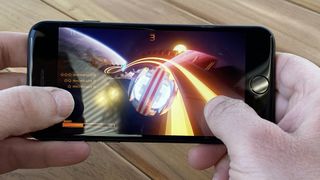
For example, the iPhone SE delivered silky smooth gameplay while I sped along in Sayonara Wild Hearts and tried to stay on the track in Super Impossible Road. The graphics were not as crisp due to the iPhone SE’s lower-res display, but the overall action was just as swift and enjoyable. Loading apps and switching between apps was also lag-free.
Scrolling on the iPhone SE feels slower than on phones with a 90Hz or 120Hz refresh rate, but I don’t expect that perk on a sub-$400 phone.
On Geekbench 5, which measures overall performance, the iPhone SE scored 3,226 on the multi-core test and 1,337 on the single-core portion. Those numbers are comparable to what the iPhone 11 (3,251 and 1,331) turned in. They also beat the Galaxy S20, which scored 3,147 and 867 and costs $600 more.
The iPhone SE performed very well on real-world performance tests, too. It took the phone just 43 seconds to transcode a 4K video to 1080p after applying a few edits in the Adobe Premiere Rush app. That result actually beats the pricier Samsung Galaxy S20, which took 1 minute and 15 seconds.
Since our testing iPhone SE review, Apple has released the iPhone 12 family, with four models powered by the faster A14 Bionic chip. Those phones outperform the iPhone SE, but make no mistake — the A13 inside Apple's cheapest iPhone still delivers a punch that tops many other devices.
iPhone SE 2020 review: Battery life and charging
The iPhone SE is rated for less battery life than the the iPhone 11, so you shouldn't expect the longest endurance. For instance, Apple says that the iPhone SE delivers 13 hours of video playback, versus 17 hours for the iPhone 11.
On the Tom's Guide Battery Test, which involves continuous web surfing over 4G LTE, the iPhone SE 2020 averaged 9 hours and 18 minutes. That's well below the endurance of the iPhone 11 (11:16), iPhone 11 Pro (10:24) and iPhone 11 Pro Max (11:54). The iPhone SE did, however, best the Pixel 4a, which scored a mere 8:55.
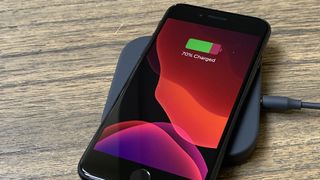
In my anecdotal testing, I found that the iPhone SE does have less staying power than my iPhone 11 Pro Max, as it has a smaller battery. For example, after unplugging the iPhone SE at 7 am and using it for web surfing, playing games, taking photos and more throughout the day, I had 20% juice left at 8 pm. That's not bad, but my iPhone 11 Pro Max still had close to 40% power.
Unfortunately, the iPhone SE comes with Apple’s standard 5-watt Lightning charger. (The bright side? Apple stopped including chargers with last fall's iPhone 12 releases.) And with that you can expect to get to just 29% power in 30 minutes, based on our testing. If you want to be able to juice this phone to 50% in 30 minutes, you’re going to have to pay extra for an 18W charger from Apple. It’s $29 for the power brick and another $19 for the USB C to Lightning cable.
If you want to go wireless, the iPhone SE supports 7.5W wireless charging and supports the Qi standard. Check out all the best wireless chargers to pair with this phone.
iPhone SE vs Google Pixel 4a
Released after the iPhone SE, the Google Pixel 4a is a very good alternative to Apple's phone. At $349, it costs $50 less than the iPhone SE. And for that price you get a bigger 5.8-inch OLED display, much slimmer bezels and a Night mode for the camera, which the iPhone SE lacks. The Pixel 4a also offers double the storage at 128GB vs 64GB for the iPhone.
On the other hand, the Snapdragon 730 processor inside the Pixel 4a is slower than Apple's A13 Bionic chip. Plus, the iPhone SE has a water resistant design, as well as wireless charging. So it really comes down to whether you prefer iOS or Android.
iPhone SE 2020 review: Verdict
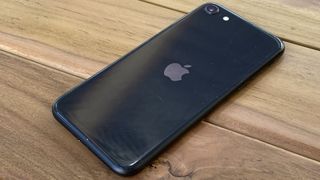
The iPhone SE 2020 is the affordable iPhone to beat, and the one of the best cheap phones you can get. It’s the closest thing to future-proof you’ll find under $400, offering the fastest performance around, very good cameras, wireless charging and a premium design that outclasses cheap Android phones.
Yes, I wish the bezels were smaller and that Apple included Night mode for the camera — and you don’t get 5G connectivity — but overall it’s hard to complain too much at this price. A 5G-capable iPhone SE 3 could be on the horizon, but it likely won't arrive until 2022.
The iPhone XR is a tempting alternative to the iPhone SE as it now costs just $499. For that money you bet a bigger display and bigger battery but a slower CPU and less advanced cameras. If you prefer a smaller phone, however, this handset will not disappoint. Overall, the iPhone SE is the one of the best phones for those on a budget.
iPhone SE review cheat sheet: Reasons to buy and skip
Reasons to buy the iPhone SE 2020
- A13 Bionic processor: The A13 chip is the fastest in a phone and offers smooth performance, whether you're juggling multiple apps, playing games or using AR apps.
- Solid cameras: That A13 chip also boosts the photography powers of the iPhone SE, as you get Portrait mode for the front and rear shooters, Smart HDR for better highlights and extended dynamic range in 4K video.
- Premium design: While a lot of premium phones have plastic designs, the iPhone SE is made of glass and metal and is also IP67 water resistant.
- Bright and colorful display: It's not full HD, but the 4.7-inch Retina Display on the iPhone SE is easy to see outdoors and provides a vibrant picture.
- Easy to use with one hand: Fans of small phones will appreciate how compact the iPhone SE is. And the Touch ID button lets you easily unlock the device.
Reasons to skip the iPhone SE 2020
- Big bezels: The iPhone SE would be even more attractive if Apple were able to deliver something closer to a full-screen design.
- No Night mode for the camera: The iPhone SE lacks the Night Mode camera feature on the iPhone 11 and iPhone 11 Pro, not to mention every iPhone 12 model. So you'll have to rely on the flash in really dim conditions.
- No 5G: Apple didn't add 5G to its phones until the iPhone 12 family last fall. 5G networks are expanding, and you'll miss out on the faster download speeds with this iPhone SE.
Mark Spoonauer is the global editor in chief of Tom's Guide and has covered technology for over 20 years. In addition to overseeing the direction of Tom's Guide, Mark specializes in covering all things mobile, having reviewed dozens of smartphones and other gadgets. He has spoken at key industry events and appears regularly on TV to discuss the latest trends, including Cheddar, Fox Business and other outlets. Mark was previously editor in chief of Laptop Mag, and his work has appeared in Wired, Popular Science and Inc. Follow him on Twitter at @mspoonauer.
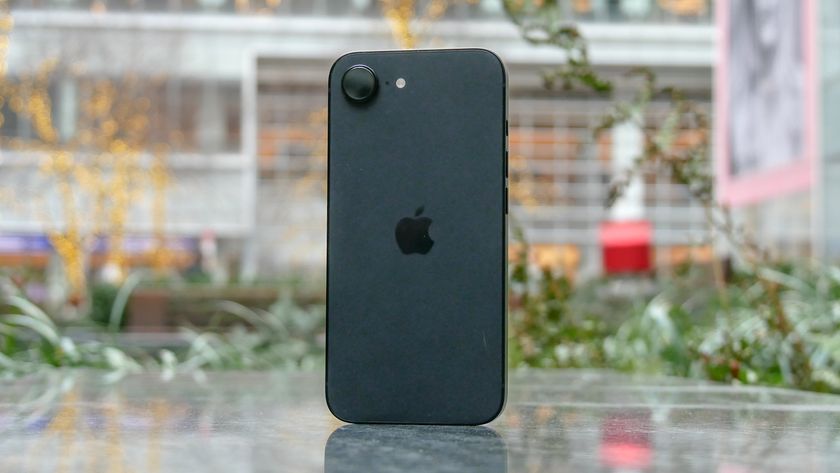
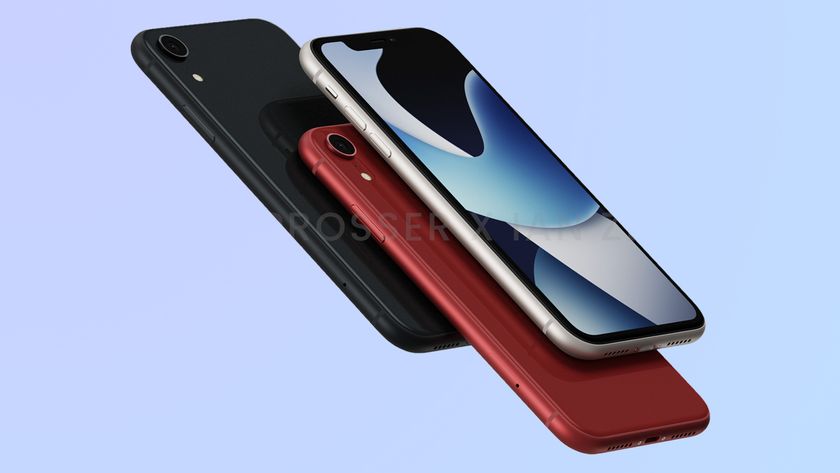
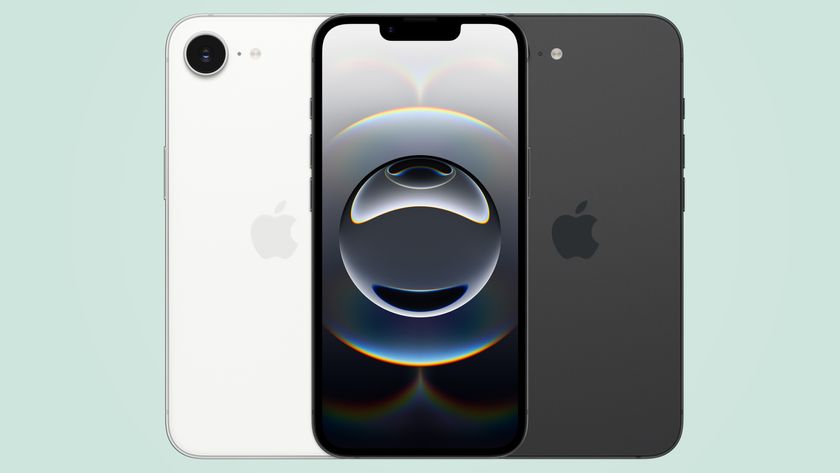
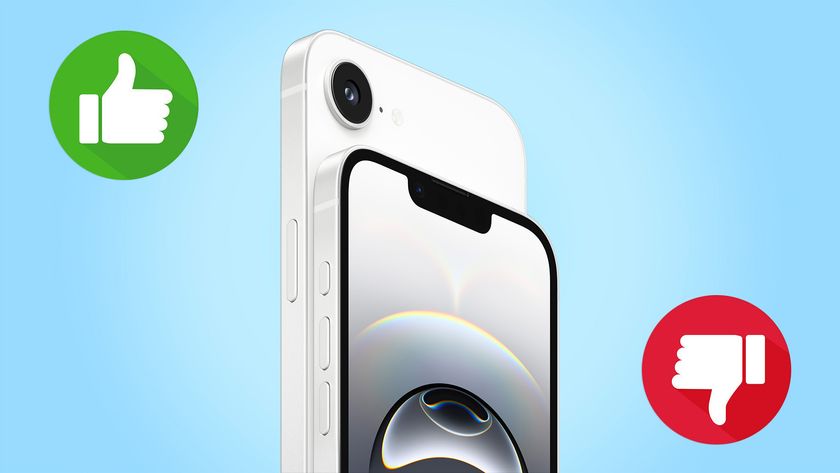
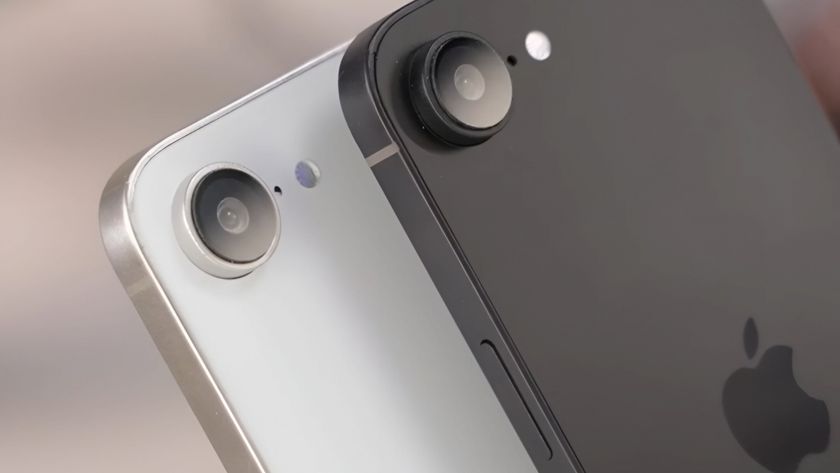
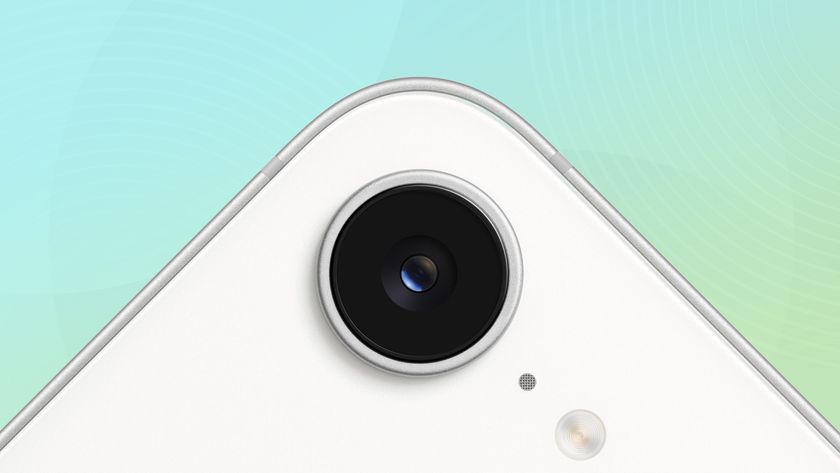
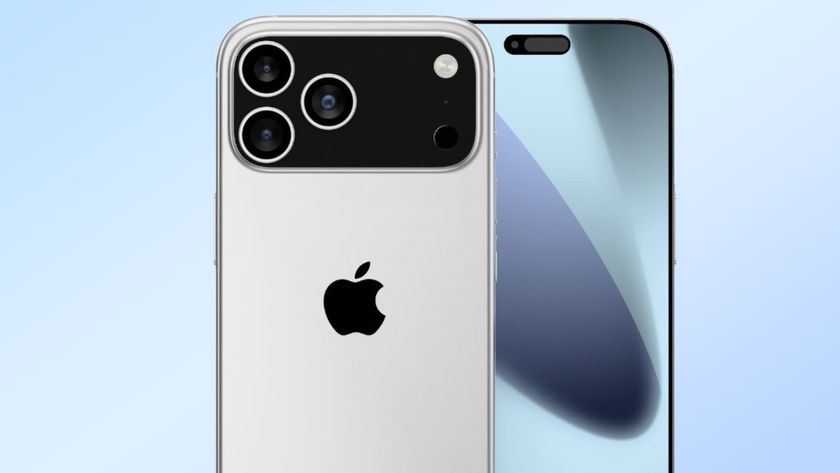
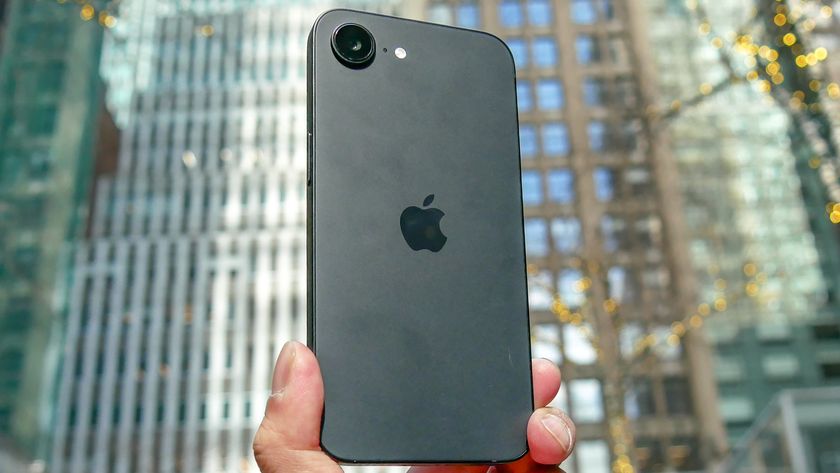
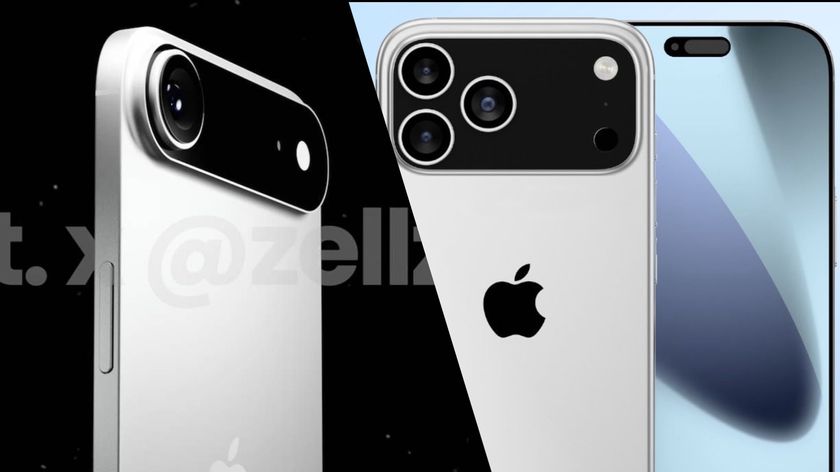
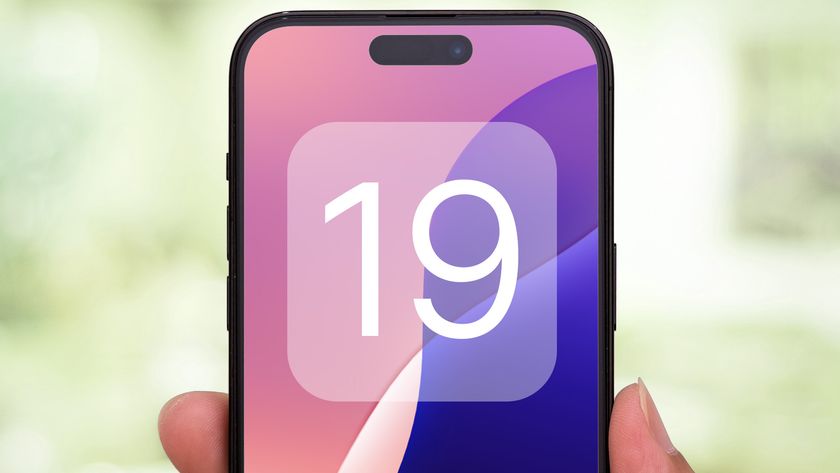
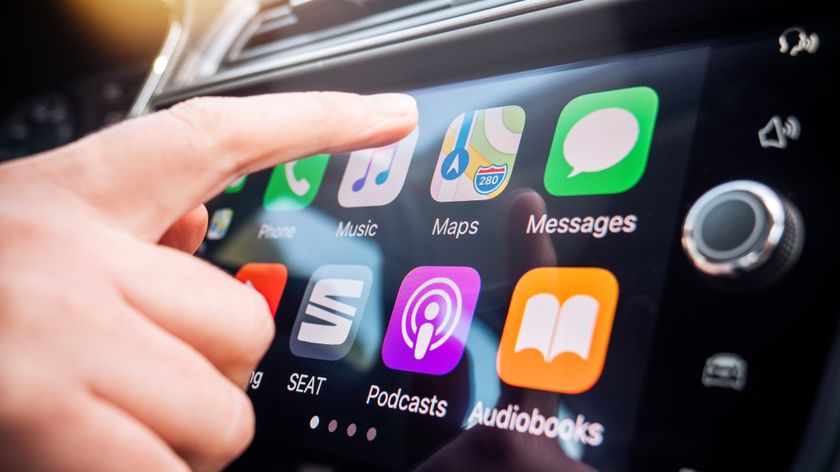
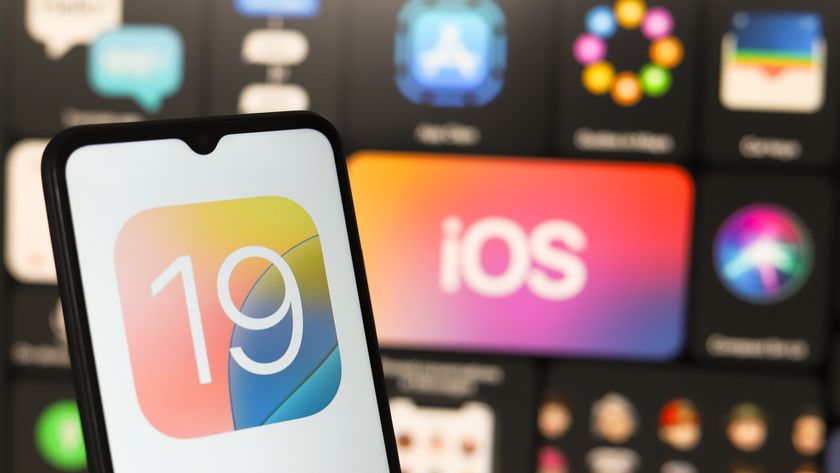

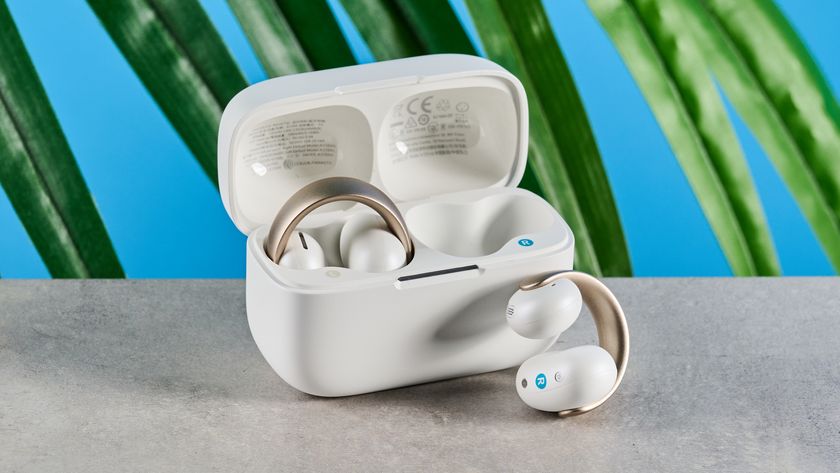
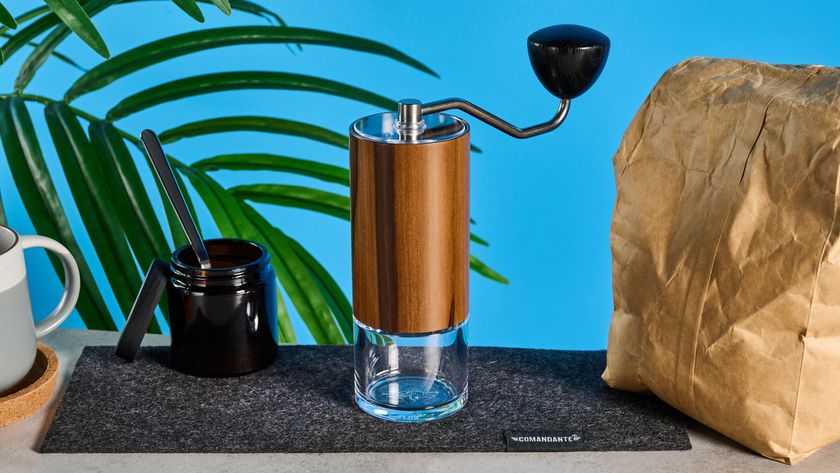
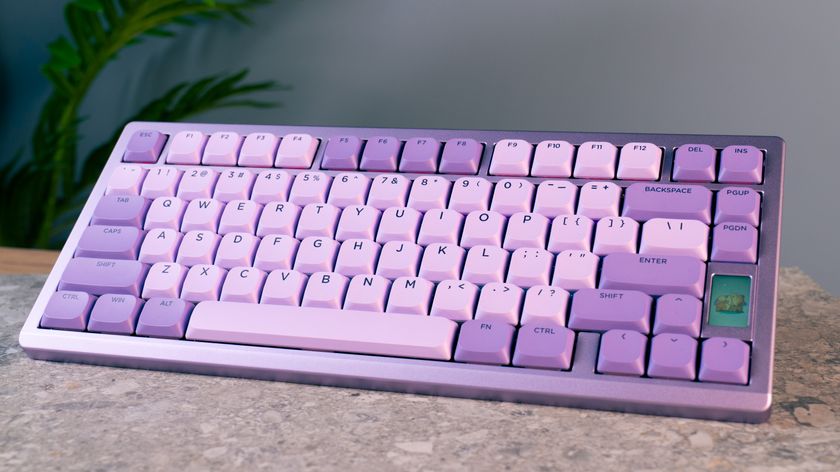
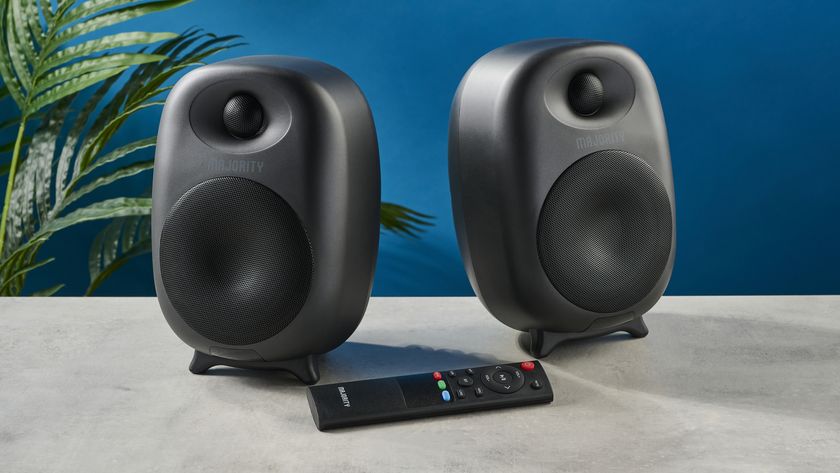
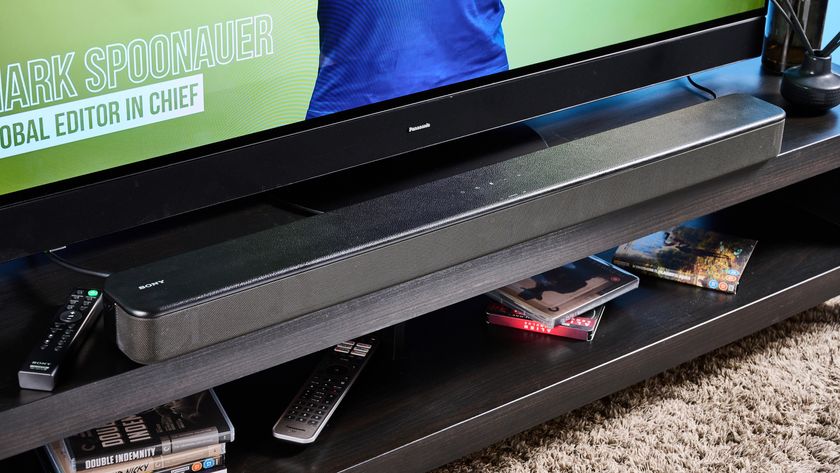
-
ej1 Mr. Spoonauer, I appreciate tom's guide and phone reviews eg standardized battery testing. However, I cannot believe that you gave this phone such a high score when the battery life is so bad! (BTW I'm not an Apple hater. I give credit where it's due.) You even wrote an article about how this phone's battery life is poor but gave the phone 4.5/5 stars?!? Also, no OLED screen is surprising.Reply
Don't get me wrong; I am glad that there are more phones at lower price points (actually there should be a lot more!). I'm a big believer in more affordable phones, but when review sites give devices inflated scores, I question credibility and motives. Do review sites ultimately want customers to buy products which support (even if indirectly) the review sites?
I am not trying to hurt your feelings; nor am I trying to single you out. Good luck, stay, safe, and thank you. -
Genji Shimada Reply
Those keeping their phones mostly in their pockets are happy to give up some battery life for smaller/lighter device. Should we lower scores of larger/heavier phones too? There is no "perfect", it's about trade-offs.ej1 said:However, I cannot believe that you gave this phone such a high score when the battery life is so bad!
OLED is quite overrated and let's not forget about its disadvantages. A lot of people think that it is superior in every aspect because of the hype around it.ej1 said:Also, no OLED screen is surprising.
The vibrant colours of OLED are a bit better for certain use cases (colourful pixar movies and similarly themed games, viewing photos) but for many other activities I still prefer a good IPS panel (I find them to be a bit sharper). Both technologies have some serious flaws. This is why I use several different types of monitors at home.
I agree with the review that the IPS LCD display in the SE is a good one (bright, colorful, sharp). Its 326 ppi is lower than what we can find in most other recent phones. 400 and 500 ppi could add a bit of extra sharpness and detail but 300 is already very sharp. Driving a lower resolution display requires less graphics processing power so I'm OK with a 326ppi display as a trade-off in a small phone that doesn't have a lot of space for battery. This might be even more important for those who want to play some casual games during travel (I don't like gaming on smartphones).
The review pointed out every single weakness of the phone. It doesn't seem to be some kind of "buy it because it's perfect" promotion.ej1 said:Do review sites ultimately want customers to buy products which support (even if indirectly) the review sites?
I am not trying to hurt your feelings; nor am I trying to single you out.
The iPhone SE got a good score because it's a very good package even with it's weaknesses. Unfortunately it's impossible to find other quality smart phones with the same or smaller form factor even with an unlimited budget. Probably because there would be a lot of people comparing the battery life to that of much larger devices with larger batteries. -
ej1 Mr. Shimada,Reply
I agree with you in many respects, but I respectfully disagree with some of your main premises. Small phone need not mean inadequate battery life. There are plenty of large phones with larger batteries that have bad battery life. Power hungry screen, power hungry processor, inefficient OS, bloatware, etc., all contribute to bad battery life. BTW I am not a fan of large phones even though I have large hands and slender fingers. (Even with my large hands, I struggle to use phones with one hand. There's no way most people can use their phones with one hand so I do not know why large phones became so popular, but I digress.)
Your comments regarding OLED are interesting. If you have sources, please feel free to share. I agree with you that it is probably best to use multiple different types of screens, but I vaguely recall articles stating that OLED is better for eyestrain. There is not enough discussion about eyestrain! Anecdotally, I know people swear that OLED is better for eyestrain. I find IPS LCD, at least on monitors, to have crazy high glare. I'm not saying LCD is not sharp, but OLED seems more like the future. (That must be why Apple is rumored to be putting miniLED in its next ipad Pro.)
Back to this 2020 iPhone SE, Apple put too much emphasis on the processor, which really does not matter much for non-gamers like you and me. That must be a reason why its battery life is so bad.
The Pixel 3a is considered a small phone; it is almost one YEAR OLDER but still has a better camera (very important in my opinion), better battery life (still on the tom's guide top 10 battery list), and better screen (OLED and higher PPI). AND it costed the same or less when it came out because so many retailers gave $100 gift cards. This iPhone is a bad triple whammy: worse key specs; one year later; and costs the same or more! I hoped this phone would be much better, but I'm disappointed.
If Apple charged significantly less for this phone, it might deserve a decent score. Actually, even if Apple charged A LOT less (eg $200), such a bad battery life is unacceptable. (IDK if the new Moto G Power is considered a small or large phone, but it apparently has the best battery life.)
It will be interesting to see how the Pixel 4a turns out. There really ought to be a lot more good budget and midrange phones in the US. -
unlistedmoniker Being brand new to "smart phones" in general and the SE 2020 in particular, I can say I'm impressed with the technology embedded in so small a unit, but I'm not equipped to do any comparisons in operating systems nor hardware. I must also say, however, that I find most of it useless and/or frivolous. Having come over from a small flip phone, I took to the ads for the SE partly because of size and partly because of price. I was astounded at the price folks are willing to pay for a phone, regardless of it's capabilities. But what astounded me even more was the really terrible support for 'newbies' on the Apple site. If you're here, you probably take for granted the motions of swiping, sliding, tapping, pressing, etc. Apple shouldn't. After 2 calls to tech support to get the simplest of things straightened out, they finally referred me to UTube to get basic skill sets and instructions. That's correct - the corporation that now exceeds the net worth of all major oil companies sells a 400.00 dollar phone, charges 3.99 if you want to download a pdf of the instructions, and has to refer you to UTube to get basic operating instructions. Strikes me as asinine. Is the site slick? yes. It's a marketers dream, but try to wade through all the Madison Ave crap when you need an answer when you're new to the subject. I was within a hairs breath of sending it back for lack of simple, basic written directions on its use.Reply
As I read through comments about what is and isn't an expected, neglected or a desired fixture/feature on these expensive little toys, my conclusion is that if everybody got back to dealing with basics first, all the phones and operating systems would improve greatly. For instance, I have an electric tooth brush, and the on/off switch is precisely where you want to place your thumb when using it - not a criminal offense for a 20 dollar appliance, but I'm finding similar poor design with the 400.00 SE. The buttons to the top left seem to be precisely where one wants to hold the phone. Why? I've already had half a dozen mishaps just holding the phone while trying to operate it.
As for battery life, I left mine sitting "on" overnight after a 100% charge with no apps running and the screen off. It used up 20% of it's battery life just sitting for 7 hours. That's not impressive and makes me wonder what I really need to do to take the phone camping, or to rely on it when wandering about the woods and using the compass or GPS functions. If I'm actually using the phone's apps, how much more would it be eating up and how quickly?
From a Newbie's perspective, these issues are far more pressing, but Apple seems to be preaching to the converted only, and aren't particularly concerned about folks new to the game. -
5in1k Just moved from the perfectly sized original SE to this one, it's too big and is uncomfortable to use one handed for me. I kind of hate it.Reply -
iontrain It is interesting that you would refer to the SE as a “toy” that astounds you as to what people will pay - you do understand in 2020 most folks are leveraging smartphones for everything from tap payments, online banking, health maintenance, online shopping, accessing government services and an innumerable list of other critical services.Reply
I suspect having come from a flip phone in 2020 you are of the older generation and realize that people who are purchasing smartphones for the most part have an inherent familiarity with how to use these devices; most of your complaints below don’t seem related to the SE but I suspect would be challenges you’d face using any smartphone - Android or Apple. As for ergonomics the manufacturer does extensive studies catered towards smartphone users so they won’t necessarily line up with push button technology like a flip phone, though I agree in general button placement seems to be contentious on some devices, I’d be curious to know how you would react to a a buttonless phone where the tech is now heading.
Apple tech support is really not in the business to teach beginners how to use a phone - that’s what YouTube is for (or many other avenues for learning) ; in your case you have the option of taking free introductory classes at Apple stores for newbies or seniors, which I would suggest exploiting instead of faulting the device for your not being able to adapt to changing technology. On the other hand you always have the option to go to the Android camp to see if you have a different experience; or to stay with your flip-phone or for that matter downgrade to a non smartphone.
unlistedmoniker said:Being brand new to "smart phones" in general and the SE 2020 in particular, I can say I'm impressed with the technology embedded in so small a unit, but I'm not equipped to do any comparisons in operating systems nor hardware. I must also say, however, that I find most of it useless and/or frivolous. Having come over from a small flip phone, I took to the ads for the SE partly because of size and partly because of price. I was astounded at the price folks are willing to pay for a phone, regardless of it's capabilities. But what astounded me even more was the really terrible support for 'newbies' on the Apple site. If you're here, you probably take for granted the motions of swiping, sliding, tapping, pressing, etc. Apple shouldn't. After 2 calls to tech support to get the simplest of things straightened out, they finally referred me to UTube to get basic skill sets and instructions. That's correct - the corporation that now exceeds the net worth of all major oil companies sells a 400.00 dollar phone, charges 3.99 if you want to download a pdf of the instructions, and has to refer you to UTube to get basic operating instructions. Strikes me as asinine. Is the site slick? yes. It's a marketers dream, but try to wade through all the Madison Ave crap when you need an answer when you're new to the subject. I was within a hairs breath of sending it back for lack of simple, basic written directions on its use.
As I read through comments about what is and isn't an expected, neglected or a desired fixture/feature on these expensive little toys, my conclusion is that if everybody got back to dealing with basics first, all the phones and operating systems would improve greatly. For instance, I have an electric tooth brush, and the on/off switch is precisely where you want to place your thumb when using it - not a criminal offense for a 20 dollar appliance, but I'm finding similar poor design with the 400.00 SE. The buttons to the top left seem to be precisely where one wants to hold the phone. Why? I've already had half a dozen mishaps just holding the phone while trying to operate it.
As for battery life, I left mine sitting "on" overnight after a 100% charge with no apps running and the screen off. It used up 20% of it's battery life just sitting for 7 hours. That's not impressive and makes me wonder what I really need to do to take the phone camping, or to rely on it when wandering about the woods and using the compass or GPS functions. If I'm actually using the phone's apps, how much more would it be eating up and how quickly?
From a Newbie's perspective, these issues are far more pressing, but Apple seems to be preaching to the converted only, and aren't particularly concerned about folks new to the game. -
Genji Shimada Reply
I'm a light mobile user. Before the iPhone SE I used a 6S for years without issues. The battery life of the SE is pretty much the same as that of the 6S and a charge lasts for at least 2 days for me.ej1 said:Small phone need not mean inadequate battery life. There are plenty of large phones with larger batteries that have bad battery life. Power hungry screen, power hungry processor, inefficient OS, bloatware, etc., all contribute to bad battery life. BTW I am not a fan of large phones even though I have large hands and slender fingers. (Even with my large hands, I struggle to use phones with one hand. There's no way most people can use their phones with one hand so I do not know why large phones became so popular, but I digress.)
I upgraded to SE only because the 6S is relatively close to the end of its support period (it was released in 2015) while the SE (similarly to most iPhone models) will be supported in the next 5+ years so I'm covered.
Search for "OLED disadvantages" or something similar in google and you will find enough reasons to hate it.ej1 said:Your comments regarding OLED are interesting. If you have sources, please feel free to share. I agree with you that it is probably best to use multiple different types of screens, but I vaguely recall articles stating that OLED is better for eyestrain. There is not enough discussion about eyestrain! Anecdotally, I know people swear that OLED is better for eyestrain. I find IPS LCD, at least on monitors, to have crazy high glare. I'm not saying LCD is not sharp, but OLED seems more like the future. (That must be why Apple is rumored to be putting miniLED in its next ipad Pro.)
One of the biggest offenders when it comes to eyestrain is PWM dimming. It gives me a headache within minutes so I avoid it like the plague. Some people aren't as sensitive to it. There are some cheap LCD panels that come with PWM dimming but it's very easy to get a quality LCD display with nice DC dimming.
Almost all OLED displays come with PWM dimming even in expensive devices. For this reason most OLED displays flicker when the brightness is below 100%. The lower the brightness the more visible the flicker becomes. The reason isn't profit but technical limitations. Using DC dimming on OLED displays results in significant loss of image quality (color accuracy, uniformity, ...).
If you have a crappy OLED TV you might be better off dimming it with layers of dark glass in front of the screen instead of lowering the brightness setting. :-D
The pixel 3a and 4a are larger than the SE and the SE is already pushing the limits of what I consider "small". I'd prefer a smaller phone like the iPhone 5S (with rounded edges because I never liked the sharp edges of the 5S).ej1 said:Back to this 2020 iPhone SE, Apple put too much emphasis on the processor, which really does not matter much for non-gamers like you and me. That must be a reason why its battery life is so bad.
The Pixel 3a is considered a small phone; it is almost one YEAR OLDER but still has a better camera (very important in my opinion), better battery life (still on the tom's guide top 10 battery list), and better screen (OLED and higher PPI). AND it costed the same or less when it came out because so many retailers gave $100 gift cards. This iPhone is a bad triple whammy: worse key specs; one year later; and costs the same or more! I hoped this phone would be much better, but I'm disappointed.
If Apple charged significantly less for this phone, it might deserve a decent score. Actually, even if Apple charged A LOT less (eg $200), such a bad battery life is unacceptable. (IDK if the new Moto G Power is considered a small or large phone, but it apparently has the best battery life.)
It will be interesting to see how the Pixel 4a turns out. There really ought to be a lot more good budget and midrange phones in the US.
iPhones are supported with iOS updates for 5 or more years. The support period for Android devices has always been much shorter. (However, those who want top hardware probably upgrade frequently so this might not be an issue for them.)
As a minimalist I appreciate the very good integration between various Apple devices.
I have windows and linux machines too for development and other kinds of messy activities but my daily driver (emails, browsing, purchasing with my credit card, etc...) is a mac because the UI across various programs is more unified and all basic activities can be done with signed Apple software (this along with being a unix system make it relatively secure even without messing with third party antivirus, firewall, etc...).
Raw hardware specs aren't the only factors for everyone. -
Eps44 All things are fine, but at some points, I do not agree with you. Yeah, I agree that it's camera quality, the design is splendid in a word but can't cover it's big lacking, which is its low durability in battery life. Nowadays, we can't spend a day without using a phone; it's needed in almost every single work of ours; in that case, if the phone's battery durability remains so low, then nobody uses that for a longer time. While buying a phone, battery life duration is a must for everyone at present, then comes the other components camera, design, etc. But only on depending camera, the method we can't give the phone rating so good whereas it's battery durability which is the central part of a phone is so low. I'm sorry to say I have to disagree with you on its so good rating part only that you have given.Reply
